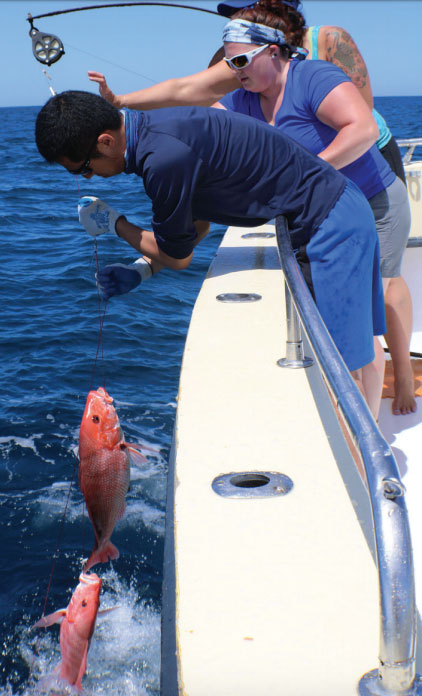Great Red Snapper Count
Project Leader:Sean Powers, Ph.D. and Crystal Hightower, Lab Manager
Project Details
Background:
Red Snapper is one of the most economically important fisheries in the Gulf of Mexico. The species is currently overfished and extensive efforts have been put towards developing models to estimate stocks and develop management plans. Even though we have seen an increase in population as a result of these management plans, the spawning potential is lower than the rebuilding target. Further research is needed to accurately assess the population.
Objectives:
The objective is simple, to independently estimate the abundance of red snapper in the Gulf of Mexico. To achieve a Gulf-wide abundance count, 21 talented multidisciplinary investigators have come together to tackle this issue.

Approach:
To accomplish these objectives, habitat classification, direct visual counts, a high-reward tagging study, and depletion surveys are being conducted across the Gulf. The Gulf of Mexico waters were divided into four separate regions: Texas, Louisiana, Mississippi-Alabama, and Florida, The Fisheries Ecology Lab is focusing on the Mississippi-Alabama region. Side-Scan Sonar surveys will be conducted to determine habitat classification, remotely operated vehicles (ROV) will be used for direct counts, vertical longline sampling will be conducted for depletion surveys, and a high-dollar tag return program will be set in place.
Results to Date:
Side-scan sonar surveys showed that pyramids and chicken coops were the main forms of habitat in Mississippi-Alabama waters. This information helped scientists decided which sampling gear for depletion surveys would be appropriate for our region. Red snapper is currently being counted to determine density estimates with from ROV videos. Vertical longline sampling and the high-dollar tag reward program have been set in place and sampling will continue through 2019.
For more information and a complete list of research organizations involved, visit https://www.harteresearchinstitute.org/snappercount.
Funding Sources: This project is funded by the U.S. Department of Commerce’s National Oceanic and Atmospheric Administration and the Mississippi-Alabama Sea Grant Consortium.